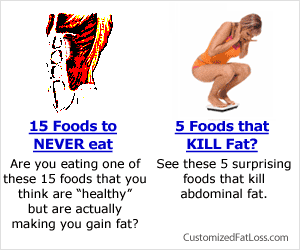The Bland Diet
Eating is an act so common that we usually overlook the capacity that we have to eat many different foods, solids and liquids, animal or plant and prepared by recipes from different parts of the world. Nor are we fully aware, once we left the table, the time and effort required by the digestive system to do its job, but one which depends on the supply of vitamins, minerals, proteins, carbohydrates and water essential for life.
Indeed, although we know that our stomach and intestines require an average of three hours to accomplish digestion, the truth is that this time depends largely on what we eat: If the menu consisted of vegetables and liquid, we will need about an hour to integrate nutrients into the bloodstream, whereas if you eat fatty foods and spicy foods like red meat, fried egg, flour and snacks, the process can take up to six hours and require considerable effort and energy consumption.
As you might imagine, those with diseases of the digestive system, which is recovering from surgery or trouble chewing, do not have the same capacity as a healthy individual to assimilate food, but need both a nutritional program provides them with energy and elements that help your recovery.
For these diets were designed generically known as “soft diet” which is based on easily assimilated products such as liquids, fruits and vegetables to ensure minimal effort for the digestive system and rarely require the use of vitamin supplements.
What is it and when it is used?
The term “soft diet” is used to designate popular so no one but a different custom meal plans with an abundance of soft consistency products or prepared as porridge, there are times in liquid-dominated, in which case they are also known as “liquid diet”.
According to nutritionists, soft diets are indicated mainly in cases of
Gastritis . Is inflammation and irritation of the lining of the stomach caused by drinking too much alcohol, smoking, eating spicy or highly seasoned foods, stress and poor management of infection caused by the bacterium Helicobacter pylori. Symptoms may include pain, belching, nausea, vomiting, heaviness, burning or heartburn and in severe cases there is blood in the vomit (when it occurs) or stool.
Colitis . This term refers to inflammation of the intestine due to transient processes (acute) or permanent (chronic) with very different causes: infection by amoeba and viruses, lack of blood flow and oxygenation in the tissues of the colon (ischemic colitis) mobility disorders favored by stress (irritable colon or nervous colitis) and presence of lesions such as polyps (growths in the mucosa or lining of the intestine) and diverticula (abnormalities in the form of bags or small bags).
Ulcer. It is a wound in the mucosa or tissue that lines the inside of the stomach (gastric) or the portion of the small intestine (duodenal). The most common cause is infection caused by the bacterium Helicobacter pylori, which is over 75% of cases, but also a cause irritating drug consumption (mainly anti-inflammatory), stress and eating disorders.
Cancer . Treatment of tumors in the stomach, pancreas, colon and rectum requires a lighter diet to get better assimilation of nutrients and reduce stress on the affected area.
Mechanical difficulties . The lack of teeth, jaw misalignment, use of prosthesis or recovery after dental implants are circumstances that also require changes to the texture of food, because food is too hard to chew and swallow hard in such circumstances.
Surgeries. To avoid overexertion, any person who is recovering from an operation anywhere in the digestive system needs this type of nutritional plan, but also those who have been operated in regions surrounding the mouth, stomach and intestines, so enter this section surgery to correct a deviated septum, reconstruction of the jaw, eradication of nasal polyps, partial removal of soft tissue of the mouth to prevent snoring, chin reconstruction, cesarean delivery and liposuction (fat removal to achieve aesthetic body shaping) .
Degenerative dementias . These diseases cause neurological decline in intellectual abilities, changes in behavior, delusions (involvement level of perception and contemplation of visual hallucinations) and disorders of movement (motor) that interfere with the ability to chew properly. People who suffer from Alzheimer’s disease (impaired memory and behavior that prevents daily activities), Parkinson (involuntary or trembling in hands, legs and face, limbs or trunk rigidity and difficulty starting movements) or Huntington ( progressive damage in memory, changes in personality, loss of skills, involuntary movements and gestures) are bland to have swallowing easier, although usually supplement their nutrition through the use of vitamin supplements.
Kidney stones. Also known as urolithiasis or nephrolithiasis, is a disease caused by the presence of calculi or stones inside the kidney or urinary tract (ureters and bladder), which are composed of common substances in the urine, but for various reasons (lack of physical activity, low fluid intake or prolonged exposure to heat) have concentrated and solidified. Treatment requires medication and soft diet with plenty of fluids to help flush the stones.
Hepatitis. Inflammation of the liver, caused often by virus infection, also requires the consumption of soft foods, but always should moderate their consumption of protein from beef, pork, fish and chicken, and replace them with those of including vegetable or pasta. Also be decreased salt intake.
Medical tests . The optimum performance of some studies and endoscopy (fiberoptic introduction to visualize the esophagus and stomach) and colonoscopy (detailed observation of the colon or large intestine by tiny camera) require the digestive tract is empty, so 1 or 2 days must be ingested before soft foods.
It should also be noted that liquid-based nutritional programs and products easy to digest can be adapted to specific strategies that depend on the needs of the patient, as
Enteral feeding. consists in the introduction of food through a tube and is designed for people who can not take the amount of food they require, as those who have car accidents, burns or recovering from surgery very aggressive
Parenteral or intravenous feeding. Provides nutrients directly into the circulatory system, so it is suitable for hospital patients who hardly digestive tract works. Very useful in case of tumors of small or large intestine, urinary tract, genitals and abdomen, as well as during treatment of cancer in the pelvis and abdomen with radiation. It is also used in severe cases of Crohn’s disease, a condition in which the defenses of the body affect some part of the gastrointestinal tract
Mixed feeding. is one in which the patient is fed on its own or through a tube, but requires extra contribution through the veins.
Preparation and example
In the bland diet food should be prepared grilled, boiled, baked or steamed, using little or no fat or oil. Spices and seasonings should be used with great discretion, as tolerated by the patient, and excluded chilies, pepper, tomato, bell pepper and spices. Although liquids are basic part, avoid coffee, chocolate, black tea and soft drinks.
The dietary fiber content of these programs varies, because although it has been shown that whole grain products and fruit husks do not generate extra effort or have irritating effect on the mucosa of the gastrointestinal tract, some people may have problems with bowel and stomach gas inflamed (a condition known as abdominal distension), so that it becomes necessary to modify the nutrition chart to avoid discomfort.
The most common treatments, ie those intended for patients with gastrointestinal inflammation and in convalescence from surgery, start with a meal plan in liquids and, along the recovery, add more solid dishes until texture is achieved reintegration to normal diet. The exception is in chronic conditions (permanent), as it is possible that the recurrence them soft or liquid diet is for life.
To provide a clearer picture, we present four examples of the basic outlines of soft diets. None of them replace those prescribed by a doctor who specializes, and which are merely indicative.
Plan based on clear liquids
Breakfast
1 cup apple juice diluted to 50%
1 cup of mint tea with sugar
1 cup of jelly.
Lunch (mid-morning)
1 cup of chamomile tea with sugar.
Food
1 cup fat-free chicken broth.
1 cup water in Jamaica.
1 cup lemon gelatin.
Peppermint tea to taste.
Snack (afternoon)
Lemon water to taste.
Dinner
1 cup fat-free chicken broth.
1 cup water in Jamaica.
1 cup pineapple jelly.
Orange tea to taste.
Plan based upon general fluids
Breakfast
1 cup apple juice
1 / 2 cup of cooked oatmeal
1 cup skim milk
2 tablespoons honey.
Lunch (mid-morning)
1 / 2 cup custard
1 cup of mint tea.
Food
1 cup chicken broth with pureed cooked carrots.
1 / 2 cup vegetable juice.
Gelatin 1 cup milk.
1 / 2 cup of yogurt
1 cup of flavored water.
Snack (afternoon)
1 cup grape juice.
1 / 2 cup vanilla ice cream.
Dinner
1 cup chicken broth with pureed cooked pumpkin
1 / 2 cup apple juice.
Liquefied 1 cup milk with an egg
1 cup of tea with a teaspoon with sugar and cream.
Before going to sleep
1 cup chocolate milkshake (milkshake).
Plan with pureed
Breakfast
1 cup peach nectar.
1 / 2 cup oatmeal cooked in water with sugar.
1 egg warm.
Tea to taste.
Lunch (mid-morning)
1 cup of chocolate milk.
Food
1 cup chicken broth with pureed cooked pumpkin.
120 grams of cooked chicken, carrots and margarine smoothies.
100 grams of mashed potatoes.
Gelatin 1 cup milk.
1 cup of water from jamaica with a teaspoon of sugar.
Snack (afternoon)
1 / 2 cup of ice cream.
Dinner
1 cup cooked beans and smoothies.
1 cup rice with milk and honey puree.
Milk to taste.
Soft consistency Plan
Breakfast
1 banana.
2 quesadillas with grilled flour tortilla.
1 piece of bread.
1 tablespoon jam.
1 cup of skim milk.
Tea to taste.
Food
1 cup pasta with spinach soup.
90 grams of boneless fish fillet on the grill.
1 cup cooked rice with carrots.
1 / 2 cup cooked green beans.
1 / 2 piece of sliced bread.
1 apple, peeled, baked and accompanied by yogurt.
1 / 2 cup of lemon water.
Tea to taste.
Dinner
1 slice of cheese (30 to 50 grams) in tomato sauce.
1 / 2 cup refried beans.
1 peach syrup.
1 cup of skim milk.
Tea to taste.
These four programs are subject to change, as their ingredients and amounts may vary according to the needs of each patient. Only emphasize that the prescription should always be performed by a specialist, in order to properly balance the requirements of vitamins, minerals, proteins and carbohydrates.
If you want to know more about best fat burners or some other pills like Capsiplex review






-SMALL.gif)
